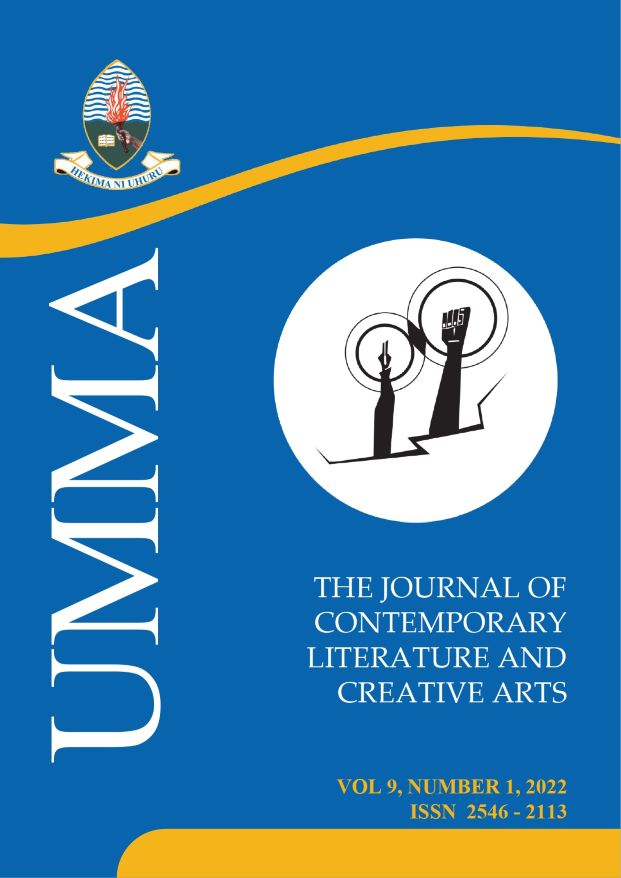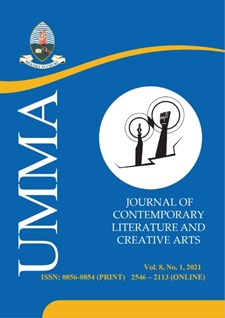Indigenous Tanzanian Music Traditions in Roman Catholic Church and Changing Social Context
Abstract
Abstract This article focuses on the use of indigenous Tanzanian music traditions in Roman Christian worship in Dar es Salaam Tanzania. The paper argues that the use of indigenous Tanzanian music tradition in church worship helps to make congregation members feel close to God and identify with their own African culture. The study focused on three churches: Msewe Roman Catholic, Manzese Roman Catholic and Kimara Roman Catholic. Congregation members and music stakeholders were involved to establish their perception of the changing social context of Tanzania ' s indigenous music traditions used during church worship. It used in-depth interviews, discussions and participant performer were the methods to explore how music from different Tanzania ethnic groups brought cultural identity and changed social context in church worship. The findings suggested that the use of indigenous traditional music in Christian churches brought cultural identity in terms of melody, tune and rhythm although changes in text, language and the performance area are inevitable. Keywords: Indigenous music tradition - African culture €“ social context. https://dx.doi.org/10.56279/ummaj.v9i1.1References
References
Agawu, K. 2003, Representing African music: Postcolonial notes, queries,
positions, Routledge, New York and London.
Askew, K. 2002, Performing the Nation: Swahili Music and Cultural Politics in
Tanzania, University of Chicago Press, Chicago.
Englert, B. 2008, Popular music and politics in Africa- Some introductory
reflections. Stichproben. Afrikastudien vol.14, no. 8, pp. 1-15.
Indigenous Tanzanian Music Traditions in Roman Catholic Church
Gunderson, F. 2010, Sukuma labor songs from Western Tanzania, Brill Leiden, Boston.
Hornabrook, J. 2018, Cultural engagement, intercultural musical exchange
and dialogue in songs of the saints: Tamil traditions and new creativities.
World of Music, vol. 7, no. 1-2, pp. 135-154.
Kidula, J. 2008, Music culture African life, in music in the life of African church,
Baylor University Press, New York.
Kidula, J. 2013, Music in Kenyan Christianity, Indiana University Press,
Bloomington.
King, R., Kidula, J., Krabill, J, and Oduro, T. 2008, Music in the life of African
church, Baylor University Press, New York.
Kubik, G. 2010, African and African €“American music: the blues ' , in M.
Strumpf and I. Sanga (eds), Readings in ethnomusicology: a collection of papers
presented at Ethnomusicology Symposium, University of Dar es Salaam, Dar es
Salaam, pp.16-17.
Lum, C, and Whiteman, P. 2012, ' Children and childhoods ' , in C.H. Lum
and P. Whiteman (eds), Musical childhoods of Asia and the Pacific, Information
Age Publishing, Charlotte, N.C.
Liwewa, E. 2009, Music as an element of Mizuka: a vehicle for healing among the
WaMakonde of Mtwara Rural District, Tanzania, Unpublished MA thesis,
University of Dar es Salaam.
Mbunga, S. 1963, Church law and Bantu music: Ecclesiastical documents and law
on sacred music as applied to Bantu music, Nouvelle Revue de Science
Missionnaire Suisse, Schoneck-Beckenried, Switzerland.
Mapana, K. 2007, Transition and change of a music tradition: a study of the
Muheme music of the WaGogo people of Dodoma, Tanzania, Unpublished MA
thesis, University of Dar es Salaam.
Merriam, A. 1964, The anthropology of music, North-western University
Press, Evanston.
Merriam, A. 1981, Discourse in ethnomusicology II: a tribute to Alan Merriam,
Ethnomusicology Publications Group, Indiana University, Bloomington.
Mkallyah, K. 2016, Affect and effect of indigenous Tanzanian music
tradition in Christian Church worship in Tanzania, Ethnomusicology, vol. 60,
no. 2, pp. 300-328.
Kassomo Athanas Mkallyah
UMMA, Volume 9 (1), 2022
Newell, S. 2002, ' Introduction ' , in N. Stephanie (ed), Readings in African
popular fiction, Indiana University Press, Bloomington, pp. 1-10.
Nyairo, J, and Ogude, J. 2005, Popular music, popular politics: Unbwogable
and the idioms of freedom in Kenyan popular music, African Affairs, vol.
, no. 415, pp. 225-249.
Nyerere Speech at Tanganyika parliament 10 December 1961 published in
Speech and Statements on January 2010.juliusnyerere.org.
Odwar, H. 2005, Music education in Kenya: a historical perspective, Kijabe
Printing Press, Eldoret, Kenya.
Park, J., Michira, J, and Yun, S. 2019, African hip hop as a Rhizomic art form
articulating urban youth identity and resistance with reference to Kenyan
' genge ' and Ghanaian hip life, The Musical Arts in Africa, vol. 16, no. 1-2, pp.
-118.
Rasmassen, A. 2018. Taking our show on the (Silk) road: the William and
Mary Middle Eastern Music Ensemble tours Morocco and Oman, The
Journal of The World of Music, vol. 7, no. 1-2, pp. 17-18.
Sanga, I. 2006a, Muziki wa injili: the temporal and spatial aesthetics of popular
church music in Dar es Salaam (1980s - 2005), Unpublished PhD thesis.
University of KwaZulu- Natal, KwaZulu-Natal.
Sanga, I. 2008, Music and nationalism in Tanzania: dynamics of national
space in muziki wa injili in Dar es Salaam, Ethnomusicology, vol. 52, no. 1,
-84.
Schein, E. 2010, Organizational culture and leadership, 4th edn, John Wiley &
Sons, San Francisco, CA.
Songoyi, E. 1988, Commercialization: its impact on traditional dances.
Unpublished BA dissertation, University of Dar es Salaam.
Wood, A, and Harris, R. 2018, Introduction: sharing spaces? sharing
culture? applied experiments in music-making across borders, The world of
Music, vol. 7, no. 1-2, pp. 7-16.
Yung, B. 2019. Exploring creativity in traditional music, Yearbook for
Traditional Music, vol. 51, pp. 1-15, doi: 10.1017/ytm.2019.46
Downloads
Published
Issue
Section
License
- Authors retain copyright and grant the journal right of first publication with the work simultaneously licensed under a Creative Commons Attribution License that allows others to share the work with an acknowledgement of the work's authorship and initial publication in this journal.
- Authors are able to enter into separate, additional contractual arrangements for the non-exclusive distribution of the journal's published version of the work (e.g., post it to an institutional repository or publish it in a book), with an acknowledgement of its initial publication in this journal.
- Authors are permitted and encouraged to post their work online (e.g., in institutional repositories or on their website) prior to and during the submission process, as it can lead to productive exchanges, as well as earlier and greater citation of published work (See The Effect of Open Access).



